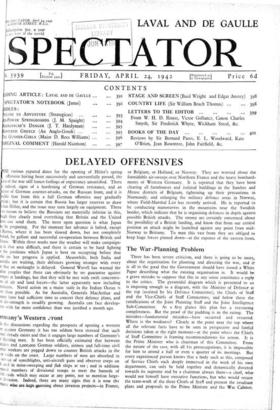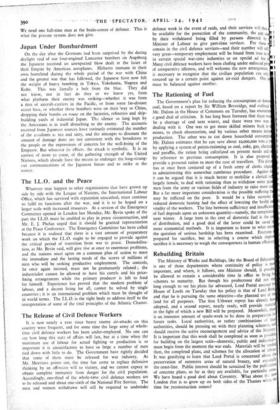The War-Planning Problem
There has been severe criticism, and there is going to be more, about the organisation for planning and directing the war, and it is all to the good that the Government should have issued a White Paper describing what the existing organisation is. It would be a grave mistake to suppose that this in any sense constitutes a reply to the critics. The pyramidal diagram which is presented to -us is imposing enough as a diagram, with the Minister of Defence at the top (assisted by his Defence Committee), the Chiefs of Staff and the Vice-Chiefs of Staff Committees, and below these the ramifications of the Joint Planning Staff and the Joint Intelligence Sub-Committee. At a first glance this plan has a reassuring completeness. But the proof of the pudding is in the eating. The mistakes—fundamental mistakes—have occurred and recurred. Where is the weakness? Clearly at the point near the top where all the relevant facts have to be seen in perspective and fateful decisions taken at the right moment—at the point where the Chiefs of Staff Committee is framing recommendations for action. It is the Prime Minister who is chairman of this Committee. From the nature of the case, with all Hs preoccupations, it is impossible for him to attend a half or even a quarter of its meetings. But every experienced person knows that a body such as this, composed of Service Chiefs each deeply immersed in the work of his own department, can only be held together and dynamically directed towards its supreme end by a chairman always there—a chief, who- would not himself have executive functions, but who would secure the team-work of the three Chiefs of Staff and present the resultant plans and proposals to the Prime Minister and the War Cabinet.
We need one full-time man at the brain-centre of defence. This is what the present system does not give.























